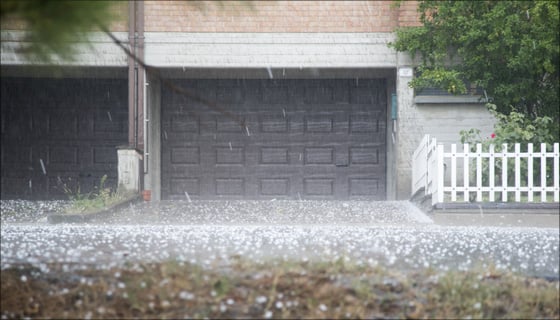
We’re quickly approaching hail season in the U.S., which begins in April when storms ravage the ‘hail belt’ from North Dakota through Colorado down through Texas.
When we think of P&C claims today, we tend to first think of major catastrophes delivered by events such as wildfires and hurricanes – but hail should be atop our radar, as it packs a hefty wallop.
Hail is the second most common claims payout for P&C insurers representing 20% of homeowners’ claims. And it’s the third most common filing at 16% of total homeowners’ claims. Hail claims last year totaled more than $14 billion!
And while hail is one of the biggest claims categories, insurer ability to accurately model and predict hail risk lags well behind the potential given current technological capability and data availability.
A recent study showed that “F” hail zones have 3X the pure premium of ‘D’ zones and nearly 10X of a ‘B’ zone – which means insurers are likely underpriced in the most dangerous hail zones. They are missing an opportunity to price more effectively and mitigate potential losses.
From our perspective, having spent years working to improve hail and property risk data availability, traditional hail risk solutions are:
-
Not leveraging all the available data
-
Not leveraging the most current data
-
Basing pricing and assessments on regional/local perils, no property-specific vulnerability data
-
Not providing an all-inclusive understanding of risk with easy-to-understand scores
Most current solutions rely on territorial-level peril ratings which are often built upon regional, zip-code, and census block-level risk data. Advances in geospatial technologies, data availability, and AI now enable much more accurate and granular assessment of risks at the property-level.
The Guidewire HazardHub Hail Model is a powerful tool for better understanding the inherent risk of hail at a property level with better risk data. Its Enhanced Hail Score is designed to predict the probability of a hail event happening at a specific property, based on a wealth of historical data and advanced geospatial modeling. It draws on property-specific and up-to-date data from all damaging hail events over the last 20 years within 25 miles of a property. It includes data on, and assessment of, the event year, hail size, and distance from the specific property.
While the Guidewire HazardHub Hail Model is transformative for insurers in its own right, we also understand that the roof the hail falls on can make a big difference in whether or not a claim is going to be filed.
That’s why Guidewire partnered with Betterview.
Betterview’s Building Vulnerability solution assesses building vulnerability – or the survivability of a given structure during an event. This part of the risk equation is not as widely leveraged in the industry as insurers do not have a holistic view of property conditions. Betterview uses computer vision to analyze aerial imagery for specific attributes that contribute to building vulnerability – attributes such as roof size and material, whether there is existing damage or missing shingles, and the extent of any roof staining.
The Guidewire HazardHub and Betterview joint offering, Hail Claim Predictor combines the power of both these solutions – into a single, transparent, and actionable indicator of overall hail risk. Each product is market-leading in its own right and together they provide a formidable hail score that can predict the likelihood of a claim. Equipped with the all-inclusive Hail Claim Predictor, insurers can:
-
Optimize risk selection and rate segmentation, writing profitable business even in hail-prone regions.
-
Automate underwriting decisions and workflow paired with a single, easy-to-use indicator, available through (a) HazardHub API, (b) in the Betterview platform and API, and/or (c) in the core system integrations including Guidewire PolicyCenter.
-
Recommend mitigation steps and proactively communicate with customers about their property’s hail vulnerability.
Insurers can use this Hail Claim Predictor to get ahead of hail claim and risk during the underwriting and pricing process and for actuarial/rating purposes.
I invite you to learn more about the Guidewire HazardHub Hail Model and the all-inclusive Hail Claim Predictor by reaching out to your Guidewire or Betterview representative or by contacting us.